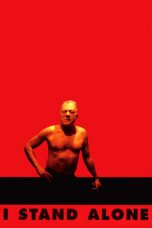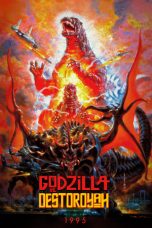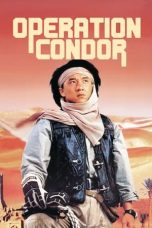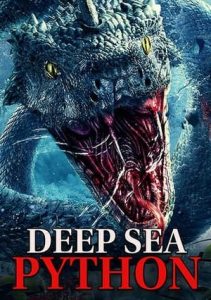- Source: Ge Hong
Ge Hong (Chinese: 葛洪; pinyin: Gě Hóng; Wade–Giles: Ko Hung; b. 283 – d. 343 or 364), courtesy name Zhichuan (稚川), was a Chinese linguist, philosopher, physician, politician, and writer during the Eastern Jin dynasty. He was the author of Essays on Chinese Characters, the Baopuzi, the Emergency Formulae at an Elbow's Length, among others. He was the originator of first aid in traditional Chinese medicine and influenced later generations.
He also took on the name Baopuzi (Chinese: 抱朴子), with a literal meaning of embracing simplicity, core qualities, and untempted by material desires.
Early life
Ge Hong was born near Jurong county in AD 283, as the third son into a well-established family originally from Eastern Wu.
His ancestor Ge Xi (葛奚) once served in the high ranking position of Dahonglu (大鸿胪) in Eastern Wu. His great-uncle was Ge Xuan (葛玄) (also known as Ge Xianweng), an alchemist during the Three Kingdoms period. He studied alchemy and Taoism with Zuo Ci.
His father, Ge Ti (葛悌), served as the prefect of Shaoling (邵陵) after the nation entered the Jin Dynasty. He died when Ge Hong was 13 and his family went into decline.
Ge Hong is of an ascetic nature and did not like honor and gain. He was not especially found of classic literature, but rather especially appreciates the guidance of the divine. Ge Hong studied Chinese alchemy under Ge Xuan's disciple Zheng Yin (郑隐).
Career
By Ge Hong's time, although the family was declining, he was employed in numerous high ranking positions within the bureaucracy of the time.
In his public service role as an official, he was often asked to appraise his friends and acquaintances as possible candidates for government office positions and was also chosen to perform military service. However, he was unhappy with his life as an official and general. Although he never rejected Confucianism, he grew interested in Taoist cultivation and elixirs to achieve the spiritual freedoms of Taoist Immortality.
In the second year of Tai'an in the Western Jin Dynasty (AD 303), Ge Hong was promoted due to his contributions in calming the peasant uprising led by Shi Bing (石冰) in Yangzhou.
In the first year of Guangxi (AD 306), Ji Han (嵇含), the newly promoted governor of Guangzhou, recommended Ge Hong to join the ranks as an army official. Ge Hong first went to Guangzhou, but after Ji Han was killed, he went to Mount Luofu to live in seclusion. There, he gathered herbal medicine, refined elixirs, and documented numerous cases of illness.
Later, Ge Hong became a disciple of Bao Liang (鲍靓), then prefect of Nanhai, from whom he learned alchemy and received the Sanhuangjing. He also married Bao Liang's daughter Bao Gu, who excelled in the techniques of moxibustion.
In the second year of Jianxing of Emperor Min (AD 313), Ge Hong returned to his hometown, but still lived in seclusion and did not work as an official. In the first year of Jianwu of Emperor Yuan of Jin (AD 317), the Inner and Outer Chapters of Baopuzi were written.
In the first year of Xianhe (AD 326), he was called by Wang Dao to serve as under the position of "Zhubo" (主簿), later promoted to "consulting general" (咨议将军).
In the 7th year of Xianhe, he heard that Jiaozhi County (present-day Vietnam) produced cinnabar, and asked Emperor Cheng to serve as the magistrate of Gouti (句屚) (near present-era Hà Sơn Bình province). After receiving the Emperor's consent, his family traveled south. When he arrived in Guangzhou, he was asked to remain, so Ge Hong once again lived in seclusion in Mount Luofu to refine elixirs.
His autobiography was the last part of his collected writings. Referring to his years as an official in Guangzhou, he wrote that "Honor and status, are like guests yet are not common goods, as they leave they cannot be kept."
Impact
Hong's main contributions were in Chinese alchemy and medicine, and also as a religious scholar integrating Confucianism and Taoism. Ge Hong questioned ancient writings and was against the traditionalism of the time, whereby older writings were valued while newer ideas were less respected, and instead emphasized innovation and methods which involved experimentation and results. This was especially the case in his work in medicine and alchemy. In medical practice, Ge Hong read a large number of medical books in his analysis and research. He summarized treatment experience and collected knowledge from folk treatments, compiling works such as the hundred-scrolled book Yuhanfang (Chinese: 玉函方).
In his book Emergency Formulae at an Elbow's Length (Chinese: 肘后备急方), he suggested treating rabies patients by applying the brain matter of rabid dogs onto the bite wound, and extractions from the plant Artemisia annua to treat malaria. The latter method inspired the works of the Chinese malariologist and pharmaceutical chemist Tu Youyou, which led to the discovery of artemisinin extracted from the same plant, part of the 2015 Nobel Prize in Physiology or Medicine.
Hong was knowledgeable about chemistry. He documented the redox reaction of mercury. He also discovered that chalcanthite (copper sulfate pentahydrate) can be transformed to a golden bronze-like alloy, using the redox reaction involving copper sulfate and iron.
There is a hall in Xiaolingfeng Temple (小灵峰寺) in Ningbo, in which enshrines a statue of Ge Hong. In the second year of Xianhe (AD 327), Hong came here to distill elixirs. When he lived in seclusion in the Lingfeng peaks (in the Yandang Mountains) nearby, a plague occurred, and he practiced medicine to help locals.
See also
Bao Gu
Ge Chaofu
Ge Xuan
References
Further reading
Campany, Robert Ford. To Live As Long As Heaven and Earth: Ge Hong's Traditions of Divine Transcendents. Berkeley: University of California Press, 2002
Davis, Tenney and Ch’en Kuo-fu. "The Inner Chapters of Pao-p’u-tzu." Proceedings of the American Academy of Arts and Sciences 74 (1941): 297–325.
Fang Xuanling, et al. Jin shu (History of the Jin Dynasty). 10 vols. Beijing: Zhonghua shuju, 1998
Feifel, Eugene. "Pao-p’u tzu nei-p’ien." Monumenta Serica 6 (1941): 113–211; 9 (1944): 1–33; 11 (1946): 1–32. [chaps. 1–4 and 11]
Giles, Lionel. A Gallery of Chinese Immortals. London: John Murray, 1948.
Hausen, Johan and Tsaur, Allen. The Arts of Daoism. Auckland: Purple Cloud Press, 2021
Hu Fuchen. Baopuzi neipian yanjiu (Research on the Inner Chapters of The Master Embracing Simplicity). Beijing: Xinhua chubanshe, 1991
Obed Simon Johnson, A Study of Chinese Alchemy, Shanghai, Commercial, 1928. rpt. New York: Arno P, 1974.
Lin Lixue. Baopuzi nei wai pian sixiang xi lun (An Analysis of the Thought of the Inner and Outer Chapters of The Master Embracing Simplicity). Taipei: Xuesheng, 1980.
Penny, Benjamin. "The Text and Authorship of Shenxian zhuan". Journal of Oriental Studies 34 (1996): 165–209.
Ren Jiyu, ed. Zhongguo daojiao shi (A History of Chinese Daoism). Shanghai: Shanghai renmin chubanshe, 1997.
Robinet, Isabelle. Daoism: Growth of a Religion, translated by Phyllis Brooks. Stanford: Stanford University Press, 1997.
Sailey, Jay. The Master Who Embraces Simplicity: A study of the philosopher Ko Hung, A.D. 283-343. San Francisco: Chinese Materials Center. 1978. ISBN 0-89644-522-4
Sivin, Nathan. "On the Pao P’u Tzu Nei Pien and the Life of Ko Hong (283-343)". Isis 60 (1976): 388–391.
Sivin, Nathan. "On the Word ‘Daoist’ as a Source of Perplexity". History of Religions 17(1978): 303–330.
Tang Yijie. Wei Jin Nan Bei Chao shiqi de daojiao (Daoism in the Wei, Jin, and Northern and Southern Dynasties Era). Taipei: Dongda tushu gongsi yinhang, 1991
Wang Liqi. Ge Hong lun (A Discussion of Ge Hong). Taipei: Wunan tushu chubanshe, 1997.
Ware, James R. Alchemy, Medicine and Religion in the China of A.D. 320: The Nei Pien of Ko Hung. Mineola, NY: Dover. 1981. ISBN 0-486-24088-6
Wells, Matthew. "Self as Historical Artifact: Ge Hong and Early Chinese Autobiography". Early Medieval China 9 (2003): 71–103.
Wong, Eva. Teachings of the Tao. Boston: Shambhala, 1997. (96–104)
Wu Lu-ch’iang and Tenney Davis. "An Ancient Chinese Alchemical Classic. Ko Hung on the Gold Medicine and on the Yellow and the White." Proceedings of the American Academy of Arts and Sciences 70 (1935): 221–84. [chaps. 4 and 16]
External links
Works by Ge Hong at Project Gutenberg
Internet Encyclopedia of Philosophy entry
Biographical profile
Ge Hong on abstention from grains
Kata Kunci Pencarian:
- .ge
- Pangu
- GE Research
- Cloudy Mountain
- Zuo Ci
- Yu Huang Da Di
- Daode Tianzun
- Yin dan yang
- Cook Up a Storm
- Putri Huan Zhu
- Ge Hong
- Baopuzi
- Taoist sexual practices
- List of Taoists
- Mount Luofu
- Tao Te Ching
- Laozi
- Yin and yang
- Alchemy
- Shenxian Zhuan
- 1
- 2
Twilight of the Warriors: Walled In (2024)
Godzilla vs. Destoroyah (1995)
Operation Condor (1991)
Beauty of Beauties (1965)
She Shoots Straight (1990)
Deep Sea Python (2023)
No More Posts Available.
No more pages to load.














